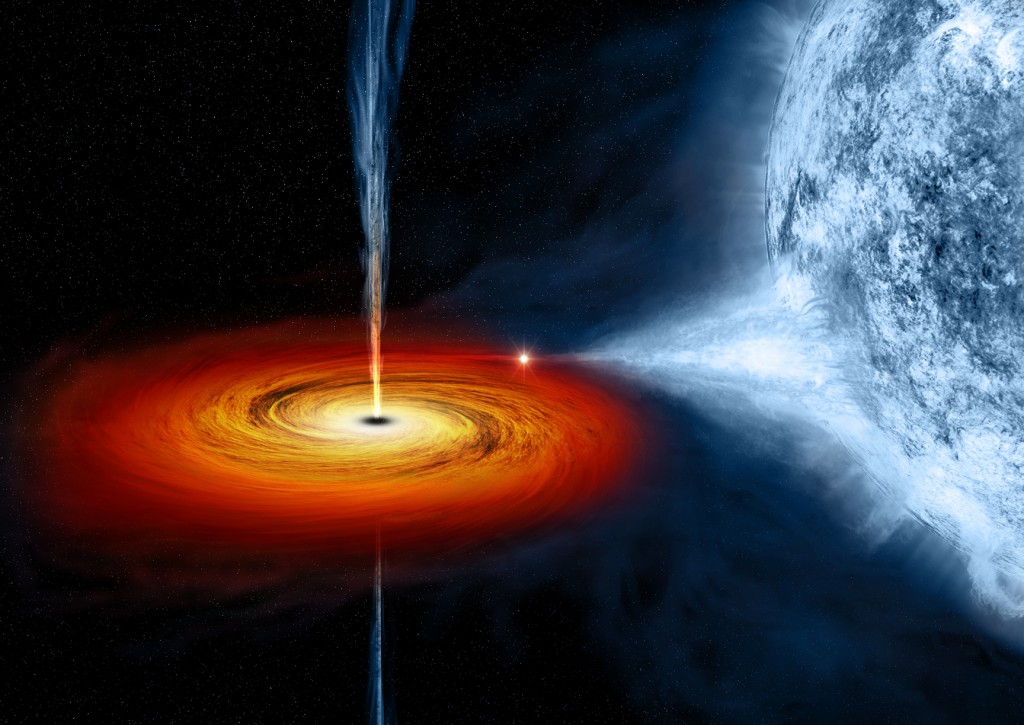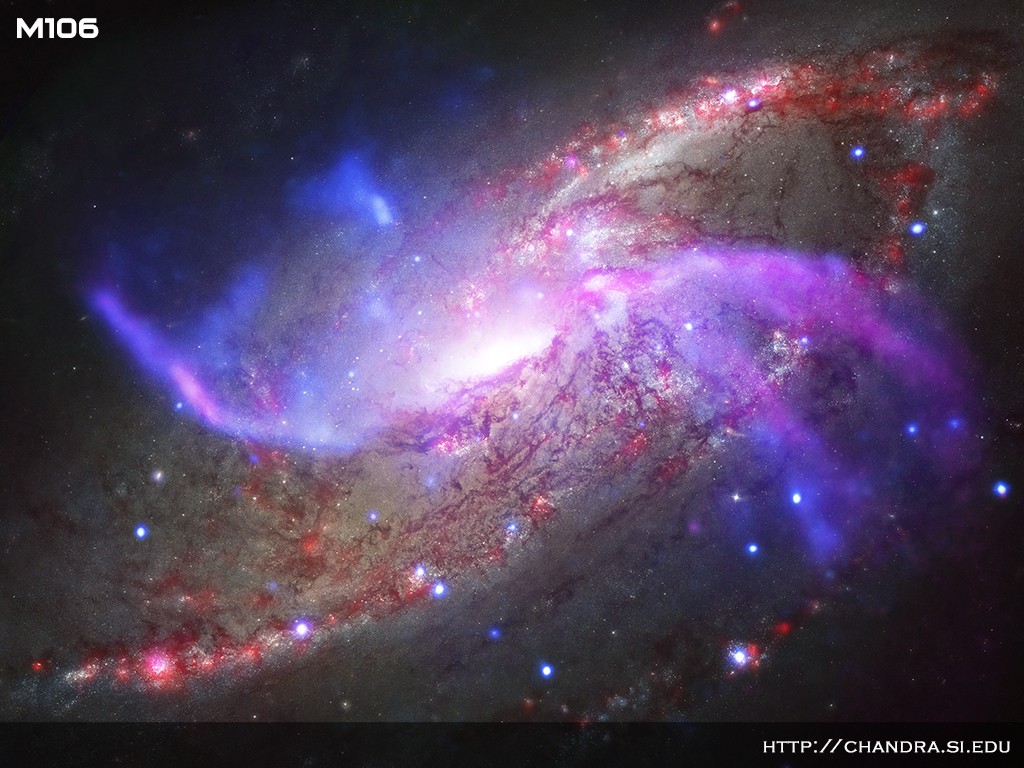The Most Important Wavelength
- By Maggie Masetti
- June 22, 2015
- Comments Off on The Most Important Wavelength
I was recently asked whether optical telescopes were the most important kind – or if they weren’t – what the most important wavelength of light was. The answer truly is – they are all important!
Most astronomical objects and phenomena emit light at more than one wavelength – so if we only look at, for example, a galaxy in optical light, we’re really not seeing the whole picture – we’re only seeing one small piece of it. Since we can’t travel to something as far as a galaxy, or handle something so large as a galaxy, light is our most important tool for understanding how it works, from the inside out.
Here’s a series of images of our neighbor, the Andromeda Galaxy, M31. It shows the optical view, as well as far infrared, X-ray, and composites of these.

Multiwavelength M31 Credit: infrared: ESA/Herschel/PACS/SPIRE/J. Fritz, U. Gent; X-ray: ESA/XMM-Newton/EPIC/W. Pietsch, MPE; optical: R. Gendler
The optical image of M31 was captured by astrophotographer Robert Gendler and shows the distribution of the hundreds of billions of stars that are still in the main (rather than beginning or end) phase of their lives.
The far-infrared image comes from the European Herschel spacecraft. Herschel’s view shows the cold dust that lies between the stars; new stars are born out of this matter. The dust gets heated by stars as they form and it shines brightly in the far-infrared. As you can see from the image, this bright dust traces out a pattern, revealing the structure of the dust (part of what is known as the interstellar medium or ISM) in this galaxy. This galaxy’s dust and gas is in a complex pattern of spiral arms and rings. There are other smaller scale features visible too, like bright arcs of more intense star formation and darker “holes” where there is less. The large rings of dust encircling M31 may be a result of a long-ago collision with a smaller galaxy.
We can contrast this picture with XMM-Newton’s X-ray view. X-rays are higher energy than infrared light, so XMM-Newton sees highly energetic phenomena, like stars at the latest stages of their lives, or even those that have already died! In the X-ray image of M31, hundreds of sources of X-rays are visible. Many of them are supernova remnants (SNRs) – SNRs are what is left after the explosion of a massive star. Supernovae and SNRs are really important to the cycle of stellar life and rebirth because it is these explosions that spread the elements created within the star during its lifetime back into interstellar space. Eventually new stars will form from this matter and the cycle of death and rebirth continues.
The explosion that creates this remnant, or shell of the former star, can also sometimes leave behind the compact core of that massive star. Depending on the mass of the star, that core can be a white dwarf star, or sometimes something way more dense like a neutron star or a black hole.
Many star systems have more than one star – the example of Tatooine from Star Wars springs to mind! Binary systems, those with two suns orbiting each other, can still exist even after one of those stars explodes. We often see binary pairs with a younger star orbiting a black hole or neutron star. When this happens, the strong gravity of the dense, compact star can pull matter from its companion. This matter orbits the compact star creating a swirling disk of matter. Friction builds up in this disk between the layers of matter, and also as matter gets closer to the central object, it swirls faster creating more friction. All this friction build-up creates heat and as gas heats up, it releases energy in the form of X-rays!

An artist’s drawing a black hole named Cygnus X-1. It formed when a large star caved in. This black hole pulls matter from blue star beside it. Image Credit: NASA/CXC/M.Weiss
These three images of M31, when put together, paint a much more complete picture of star birth, life, and death than any of these images could by themselves.
The Chandra X-ray observatory website has some great multiwavelength images of galaxies and other astronomical objects as well. Check out M106, a spiral galaxy like the Milky Way.
Here is the composite image of it which includes radio, infrared, X-ray, and optical light data:

Credit: X-ray: NASA/CXC/Caltech/P.Ogle et al; Optical: NASA/STScI & R.Gendler; IR: NASA/JPL-Caltech; Radio: NSF/NRAO/VLA
This galaxy has something the Milky Way doesn’t – two extra spiral arms that aren’t even aligned with the plane of the galaxy. Because these arms are visible X-ray, optical, and radio light, each of these different wavelengths of light can be used to help us learn more about what’s going on in this galaxy.
Infrared Spitzer data shows us that shock waves are heating the gas. Radio data shows that a supermassive black hole at the center of the galaxy is releasing jets of matter that may be impacting the disk of the galaxy, creating these shock waves that are heating the gas. X-ray data from Chandra shows huge hot bubbles of gas above and below the galaxy. This gas is thought to have originally been a part of the disk of the galaxy until it was heated to millions of degrees and then ejected by the jets from the black hole! The more gas the galaxy ejects, the less remains in the disk. And the less gas there is in the disk, the less material is available for new stars to form from. And indeed, infrared Spitzer data shows that this galaxy has a rate of star formation that is ten times less than our Milky Way!
The Chandra site has many other multiwavelength composite images, so be sure to browse through their site for more! (The link in the text is to their 2014 archive – and at the bottom right hand corner are links to other years of these images.)
Galaxies aren’t the only astronomical object that is worth viewing in multiple wavelengths. There are also planetary nebulae, galaxy clusters, supernovae remnants and more!


